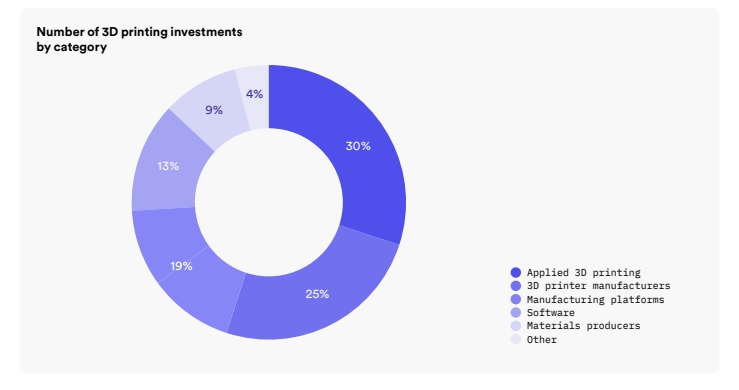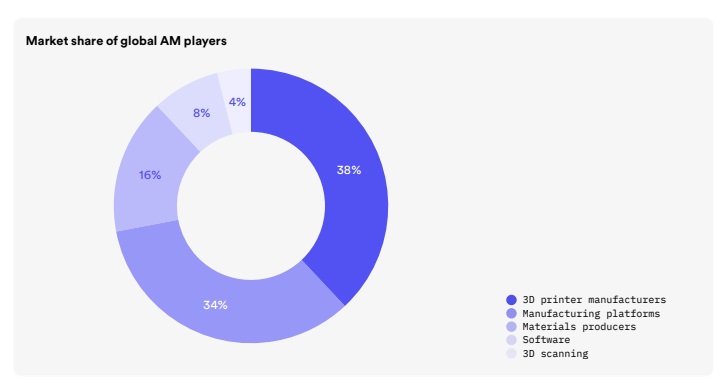Over the next five years, analysts expect the 3D printing market to grow on average at 24%, reaching $35 billion by 2024, according to 3D Hubs’ 2020 3D Printing Trends Report.
In the annual report published by the on-demand manufacturing platform, it is noted that more than $1.1 billion was raised by 3D printing start-ups in 2019, with 3D printer manufacturers acquiring over two-thirds of the total funding from venture capitalists.
Bram de Zwart, Co-founder and CEO, 3D Hubs, stated “2020 marks a new decade in which manufacturing will become more localized, on-demand and freed of design constraints. 3D printing is a key driver of this change.”
“Funding is increasing in both China and Europe—from both private investors and EU-lead programs—to promote the competitiveness of the local digital manufacturing economies. We also see an increase in the number of investments in 3D printing applications, especially in the space, and MedTech sectors.”
Capitalizing on additive manufacturing
The most significant amounts of finance were awarded to Carbon with $260 million in growth funding, Desktop Metal with $160 million in Series E funding, and Relativity Space raising $140 million in funding. Jon Bruner,
Head of Enterprise Strategy, Carbon, writes that “As more evidence demonstrates the value of 3D printing, it becomes easier for business leaders to justify
investments in 3D printers and to drive the development of 3D printed products.”
In the first and second quarters of 2019, it is reported that the aerospace sector has been one of the prominent industries demonstrating the applications od additive manufacturing. The technology was used by British spaceflight company Orbex‘s 3D printed rocket engine, Launcher‘s 3D printed chamber, and Thales Alenia Space‘s 3D printed satellite brackets. Relativity Space also received permission to expand facilities at NASA’s Stennis Space Center in Hancock County, Mississippi, in the production of completely 3D printed rockets.

The metal 3D printing market
The report observes that the “metal 3D printing market has been growing at a rate of over 40% year-over-year for the past five years.” Nonetheless, recent studies taken into consideration have also identified factors that may slow down this growth. “Many metal AM users are currently having problems reaching full utilization of their machines, attributed to the increased number of suppliers of commodity components, which surpasses the current demand.”
The report goes on to highlight that “The strict and currently often unclear process qualification requirements for specialized applications may also have had an influence.
“The poor performance of the 3D printing stocks is another worrisome indicator. In the past four years, out of the top five US stocks related to 3D printing, only two (the service providers, Materialise and ProtoLabs) have managed to beat the market.”
Access the full 3D Hubs 2020 3D Printing Trends Report here.
To gain further perspective on additive manufacturing trends to come, 3D Printing Industry asked 100 additive manufacturing leaders to identify how the technology will develop over the next ten years.

Subscribe to our 3D printing newsletter and follow us Facebook and Twitter for the latest additive manufacturing updates. Visit our 3D Printing Jobs board to find out more about opportunities in additive manufacturing.
Featured image shows a metal 3D printed part fulfilled by 3D Hubs. Photo via 3D Hubs.


